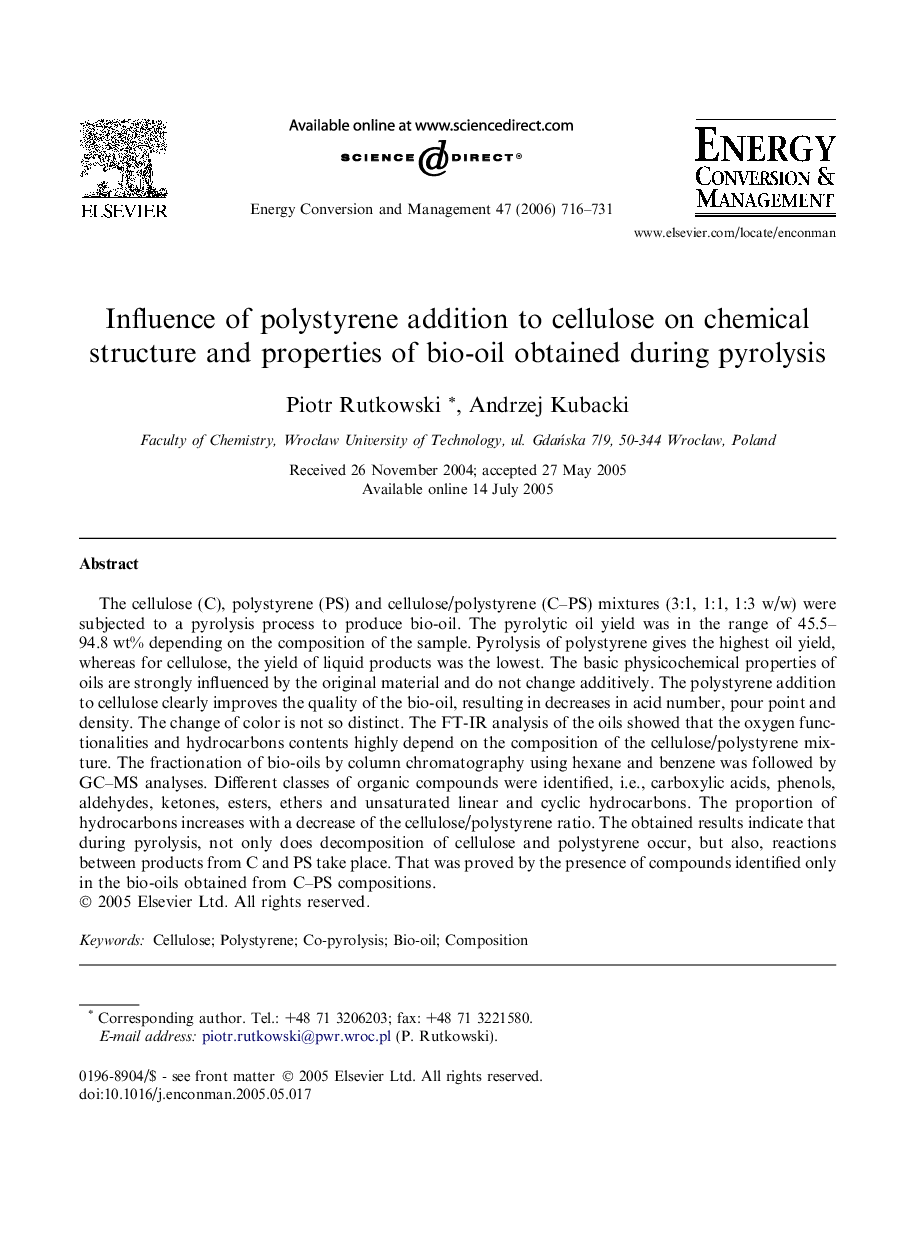| Article ID | Journal | Published Year | Pages | File Type |
|---|---|---|---|---|
| 766818 | Energy Conversion and Management | 2006 | 16 Pages |
The cellulose (C), polystyrene (PS) and cellulose/polystyrene (C–PS) mixtures (3:1, 1:1, 1:3 w/w) were subjected to a pyrolysis process to produce bio-oil. The pyrolytic oil yield was in the range of 45.5–94.8 wt% depending on the composition of the sample. Pyrolysis of polystyrene gives the highest oil yield, whereas for cellulose, the yield of liquid products was the lowest. The basic physicochemical properties of oils are strongly influenced by the original material and do not change additively. The polystyrene addition to cellulose clearly improves the quality of the bio-oil, resulting in decreases in acid number, pour point and density. The change of color is not so distinct. The FT-IR analysis of the oils showed that the oxygen functionalities and hydrocarbons contents highly depend on the composition of the cellulose/polystyrene mixture. The fractionation of bio-oils by column chromatography using hexane and benzene was followed by GC–MS analyses. Different classes of organic compounds were identified, i.e., carboxylic acids, phenols, aldehydes, ketones, esters, ethers and unsaturated linear and cyclic hydrocarbons. The proportion of hydrocarbons increases with a decrease of the cellulose/polystyrene ratio. The obtained results indicate that during pyrolysis, not only does decomposition of cellulose and polystyrene occur, but also, reactions between products from C and PS take place. That was proved by the presence of compounds identified only in the bio-oils obtained from C–PS compositions.
